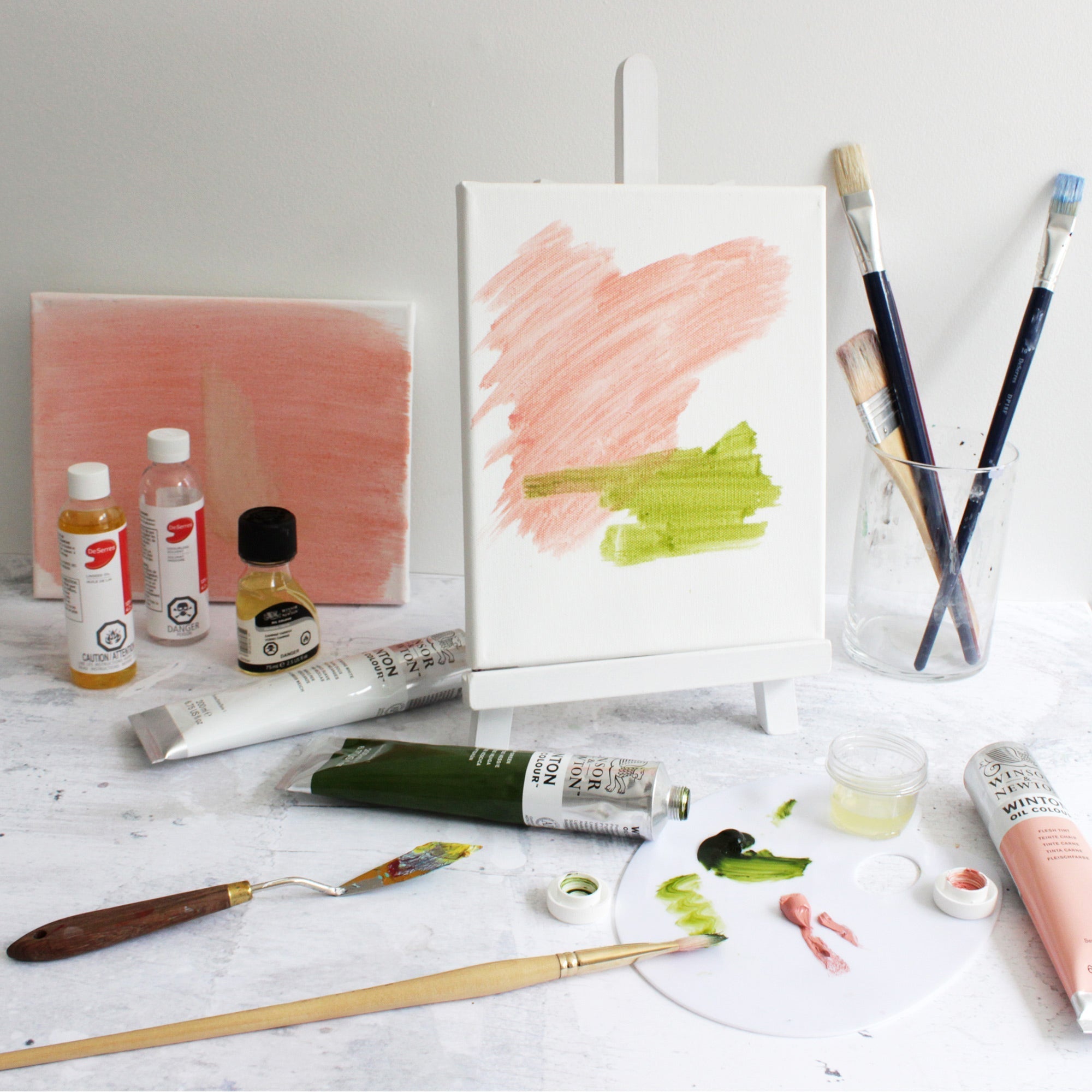Discover 3 oil painting techniques: alla prima, imprimatura and glazing. Oil painting requires patience and perseverance. These techniques can help, no matter your comfort level with oil painting.
MATERIALS:
- Oil paints
- Canvas
- Linseed oil or stand oil
- Dammar varnish
- Odourless solvent or turpentine
- Paintbrushes
- Palette
- Container with a lid
INSTRUCTIONS:
3 oil painting techniques
1- Alla Prima technique
The Alla Prima technique involves creating the entire artwork in a single session, where one or more layers are applied “wet on wet”.
With this technique, a new layer is applied directly to the wet previous layer, without waiting for it to dry.
Given that the paint is still wet, attention must be paid to colour composition by preserving the bright areas. It will be difficult to achieve light areas over darker colours, as wet colours may bind together.
To sum up, the Alla Prima technique involves:
- Applying lower colours and shades
- Filling in areas of shadow and light
- Applying fine details
2- Imprimatura technique or coloured ground
The Imprimatura technique consists of applying a thin wash of coloured primer (sometimes even transparent) as a base for the artwork. A coloured background makes it possible to bring out certain tones and softens the brightness of the colour compared to a white background. In general, we prefer grays or neutrals, but you may opt for a colour that is complementary to the dominant hues of your artwork. For example, a forest landscape with predominantly green hues will be nicely highlighted against a red background with earthy tones. It's up to you to test different options and find the nuances that will best suit your chosen subject!
Step 1:
In a well palette or shallow container, mix the oil paint with a solvent until a fluid consistency is achieved. Just a few drops of solvent may be sufficient.

Step 2:
Using a wide square brush, cover the canvas with a very thin layer so that it dries quickly.
Step 3:
Wait until the layer is completely dry before applying subsequent layers (while following the rule of "fat over lean").

3- Glazing technique
The glaze is typically the last coat of colour. The colour should have the highest content of oil. Make sure the previous coat is completely dry before applying the glaze.
A glaze is a coloured transparent layer that serves to enhance the underlying colours and give them more lustre.
You can create your own glazing medium or add a pre-made glaze to your colour.
To make a basic glaze:
- In a container with an airtight lid, mix 2 parts solvent, 1 part stand oil or linseed oil, and 1 part Dammar varnish
- With a paintbrush handle or a stick, stir well without shaking (to prevent bubbles from forming).
Step 1:
Add a few drops of the glaze mixture or a pre-made glazing medium to the oil palette. Mix until colours are fluid and translucent.

Step 2:
Apply the new mixture to your painting. The more glaze you apply, the lighter and more translucent your pain will become. For darker glazes, add more paint or layer multiple glazes. Glazes dry more slowly due to their very high concentration of oil.

TIPS
The “fat over lean” rule involves ensuring that your new layer of paint has a higher oil content than the previous layer. The oil makes the paint fat while the solvent makes it lean. Applying this golden rule to your painting will prevent the formation of cracks or "orange skin" effects when the paint dries.








